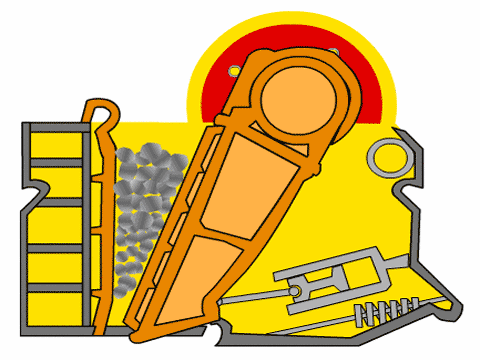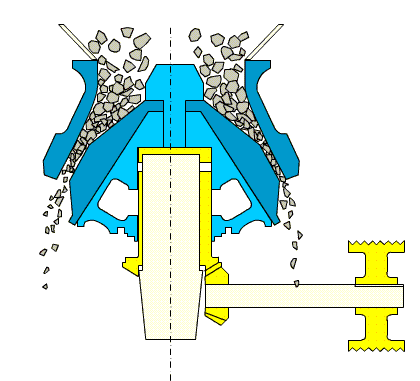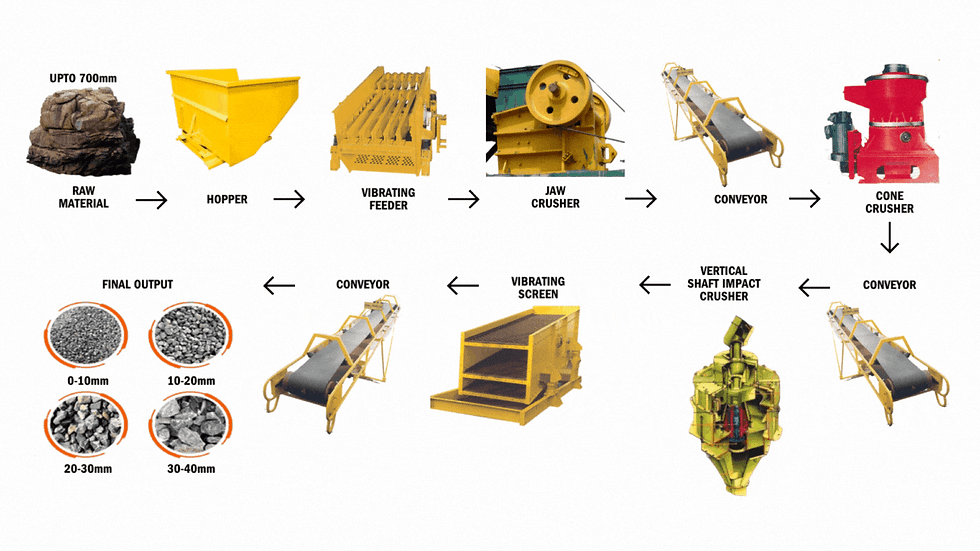Best Crusher for Iron Ore Processing
- Prakash Agarwal
- Jul 28, 2024
- 2 min read
Iron ore is a key ingredient in making steel. In fact, about 98% of the iron ore that’s mined goes into steel production. There are two main methods for this: the blast furnace-basic oxygen furnace (BF-BOF) method and the electric arc furnace (EAF) method. Most steel in the world is produced using the BF-BOF method.
Types of Iron Ore
Iron ores that have a lot of hematite (over 60% iron) are called "natural ore" or DSO (Direct Shipping Ore). These can be used directly in the BF-BOF method. However, lower-grade ores need to be processed first. To prepare these ores, they go through crushing and screening to separate the valuable iron from the waste material.
Crushing Equipment

Jaw crushers have been around since the 19th century and are mainly used as primary crushers. They crush material between a fixed jaw and a moving jaw. As the moving jaw compresses the material, it breaks apart. These crushers are reliable and popular for small to medium projects, handling up to about 1,600 tons per hour. To boost their efficiency, vibrating screens are often used before jaw crushers to remove smaller materials.
Call 824093968 to get a quote for a Crusher machine
Gyratory and Cone Crusher

Gyratory and cone crushers were also developed in the 19th century as alternatives to jaw crushers. A cone crusher is a type of gyratory crusher with a slightly different design. In a cone crusher, material is crushed in a space between a fixed bowl liner and a moving mantle. The movement is created by an eccentric shaft, which allows the cone to oscillate and crush the material continuously.
These crushers are designed to handle larger feed sizes compared to jaw crushers, making them suitable for primary crushing. Gyratory crushers can process between 1,200 to over 5,000 tons per hour, thanks to their wide discharge openings and continuous operation.
For cone crushers, the design of the crushing chamber is crucial for performance. There are different chamber profiles available to match the type of material being crushed, ensuring optimal results.
Call 824093968 to get a quote for a Crusher machine
Tips for Efficient Crushing
To get the best performance from these crushers, it’s important to keep them "choke-fed," meaning the crushing area should be full of material. This can be managed using stockpiles or silos to regulate the flow of material. Monitoring devices can help ensure that the material levels are just right, starting and stopping the feed as needed.
In summary, understanding the types of iron ore and the equipment used in crushing can help streamline the steel production process and improve efficiency
Comparing Crushers
Crusher | Stage | Max Feed size (mm) | Max Output size (mm) | Capacity (tph) |
Gyratory crusher | Primary | 1500 | 200-300 | 1200–over 5000 |
Jaw crusher | Primary | 1400 | 200-300 | Up to 1600 |
Horizontal impact crusher | Primary/ Secondary | 1300 | 200-300 | Up to 1800 |
Cone crusher | Secondary | 450 | 60-80 | Up to 1200 |
Cone crusher | Tertiary | 150 | <30 | Up to 1000 |
Call 824093968 to get a quote for a Crusher machine




Comments